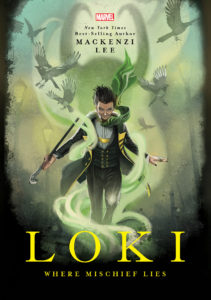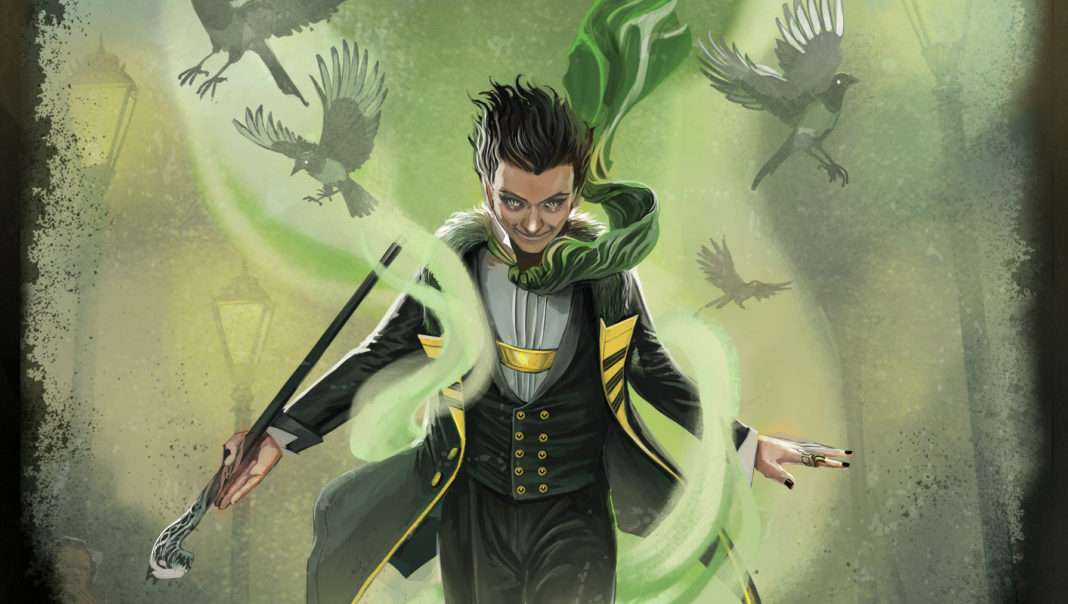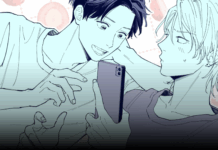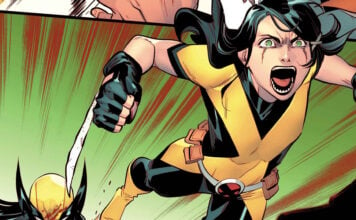When The Gentleman’s Guide to Vice and Virtue author Mackenzi Lee was announced as the author for a young adult, Victorian-set novel about Loki Laufeyson in 2017, the Internet responded with incredible enthusiasm. Much of that had to do with Lee’s early assertion that she would be writing Loki as genderqueer and pansexual, which, as she noted at the time, has been Marvel Comics canon since Al Ewing and Jason Aaron wrote Original Sin.
In Loki: Where Mischief Lies, which hit shelves in September, the character’s gender and sexuality are explicitly mentioned at multiple points throughout the book. Regarding the latter, he has two love interests of different genders, one of whom has a disability born of homophobic violence. Regarding the former, in a particularly memorable passage, Loki says, “I feel equally comfortable as either [man or woman],” and follows with the clarification, “I don’t change my gender. I exist as both.” When he’s told that doesn’t make sense, Loki says, “It does to me.”
For queer readers, in particular, this rendering of Loki can be especially powerful. Including multiple queer characters in Loki: Where Mischief Lies is also a bold step, and one that Lee handles carefully within the historical and supernatural contexts of the story.
Shortly after the book was released, The Beat chatted with Mackenzi Lee via e-mail about writing Loki, how she balanced Marvel canon with the story she wanted to tell, and the response she’s received from readers (including Loki superfans).

Samantha Puc: What draws you to Loki as a character?
Mackenzi Lee: Loki is unpredictable, and you never quite know whose side he’s on, and as a reader or viewer, that’s thrilling and suspenseful. However, the sort of sneaky, devil-may-care facade he puts on is cover for so much childhood trauma and pain that in spite of constantly betraying everyone and thinking only of himself, he manages to remain an empathetic character you root for. It’s such a difficult balance to achieve, and I’m lucky so many brilliant creators paved the way for me to work with him in Where Mischief Lies.
Puc: Do you have a favorite version of Loki, whether from a specific comics team or from one of the films?
Lee: I love Loki in the Agent of Asgard comic series. He’s aged from kid Loki into a teenage version of himself and he’s sneaky, modern, and sassy, but also more vulnerable than we usually get to see him. The black nail polish Loki wears in my novel is a direct homage to Agent of Asgard!
Puc: How did you go about developing this story in relationship to Marvel Comics canon?
Lee: I was a lucky to have a great team behind me at Marvel who have spent their whole careers studying these comics and films and TV shows and keeping track of the universe and the many creators who work in it, so while I did a lot of reading to keep the canon as consistent as possible, I definitely had fact checkers behind the scenes who were helping me. The version of Loki we see in the novel is one of the youngest versions of the character that has appeared in the Marvel Universe, which gave me a lot of freedom to develop his backstory. There was a lot of continuity in his future to worry about, but not so much in his past since we hadn’t seen it before.
Puc: How did you balance what you wanted to do with the characters versus what’s already been done?
Lee: I never felt limited by what had already been done, or like my work had to balance with it. Instead, I tried to absorb as much of it as I could while also realizing that my version of Loki would inherently be different because of who I am as a creator and the time in which I’m writing — both 2019, and where Loki is in his timeline. It felt less like a balancing act and more like adding another brick to an incredible structure that so many creators I admire have worked on before me.
Puc: Why was it important for you to write Loki as genderqueer and pansexual, with scenes directly acknowledging these facets of his identity peppered throughout the book?
Lee: I think queer undertones are intrinsic to Loki and his magic. Being a shapeshifter already makes him fluid, and as far back as versions of him in the Norse myths, we see Loki manipulating his gender and taking a variety of partners. It would have felt disingenuous to portray him as anything else. And, while we’ve come a long way with representation in comics, we still have a long way to go. As for direct references on the page — like many people, I’m tired of queer rep being only subtext in media. We need to bring identity onto the page.
Puc: What is the import of including a visibly disabled character, especially one whose disability comes from homophobic violence?
Lee: It wasn’t a particularly conscious choice — it was always simply a part of Theo’s character. His backstory not only reflected the time period he lived in, but also makes him a better foil for Loki. Loki has come up in a world without the same prejudices as Victorian London has and has always taken these things for granted. Theo and Mrs. S. and the experiences of the Midgardians Loki meets put these facts in sharp relief, and broaden his view of the Nine Realms.
Puc: Was there ever a version of this story where Loki stayed with either of his love interests in the end?
Lee: Nope — because [of the need to stay] in continuity with the existing canon.
Puc: Can you speak to the term “witch” and how you use it in relationship to Loki’s arc and to the attitudes of the people (and gods) he interacts with? Its usage feels very pointed and very connected to Loki’s gender, which is excellent, but I’m curious about your choice to incorporate and rely upon that term so much, especially with Loki claiming it at the end after flirting with it for so long.
Lee: In western literature, which is the canon Loki’s character comes from, the term witch is so loaded. It’s a term that has been used for centuries to persecute, torment, and often murder women, as well as minority groups. It became a catch-all reason for both the unexplainable and for punishing those who were not deemed to fit within society for a variety of reasons. Though it’s now a gendered term, it’s been used to refer to both men and women across history. I liked the term in association with Loki because using a term we consider feminine in conjunction with him further emphasized the fluidity of his character, and to use a term that is traditionally associated with outsiders sharpens his narrative as an outsider in his home in Asgard, and that magic is what makes him an outsider. His embracing the term at the end sets the stage for him embracing that outsider status.
Puc: How did the story change from your initial conception to its final, published version?
Lee: So much. I rewrote the book from the ground up probably four times. While there were things that stayed the same in every draft, the foundations and scaffolding of the story changed drastically each time. It was difficult and painful, but looking back, I realize how essential each draft was in building the finished version.
Puc: Has anything about writing this book surprised you?
Lee: That I get to do this for a living? I know that’s not really what you’re looking for but it’s still surprising to me every time I sit down to work. Surprising and [I feel so] lucky!
Puc: What has been the response from readers?
Lee: Incredibly positive! I was really concerned, because Loki has such intense fans, I assumed that everyone who read the book would be bringing very strong preconceptions about who Loki is, and no matter what I wrote, my version of the character couldn’t possibly be everything to everyone. But in general, the fans have been lovely, and so excited about more Loki. I’ve been so grateful for the warmth and enthusiasm.
Puc: Do you think you’ll ever create more stories in this world?
Lee: I’m done with Loki, but I have two more books with Marvel that also deal with anti-heroes. Stay tuned for more details!
Puc: What else are you working on currently, if you can say?
Lee: I have a book out on October 15 called The History of the World in 50 Dogs. It’s a nonfiction book of short essays about dogs and their role in history, illustrated by the incredible graphic artist Petra Eriksson. It’s very different from Loki, but I’m so proud of it, and both books allowed me to further explore my love of history.
Loki: Where Mischief Lies is currently available everywhere books are sold.









